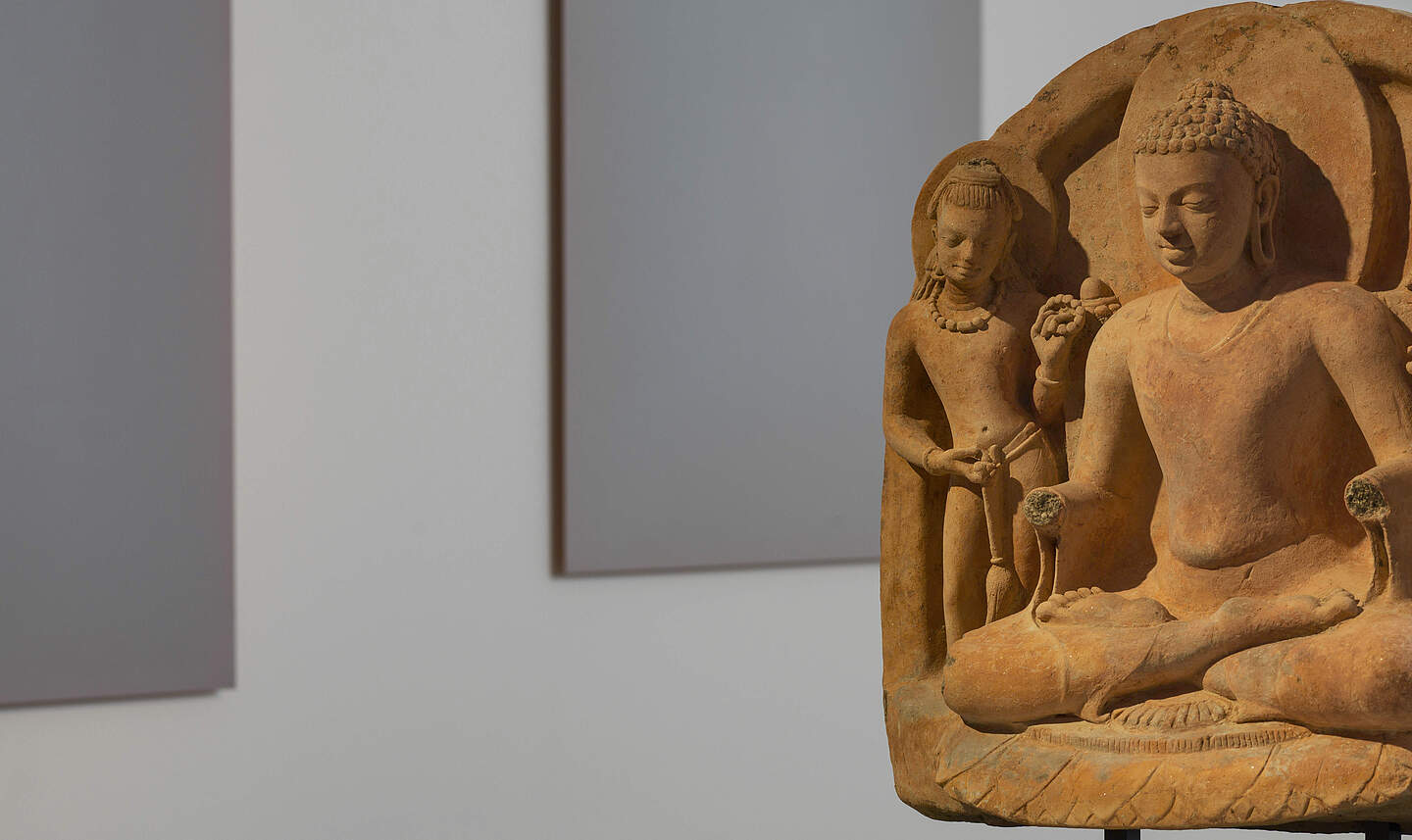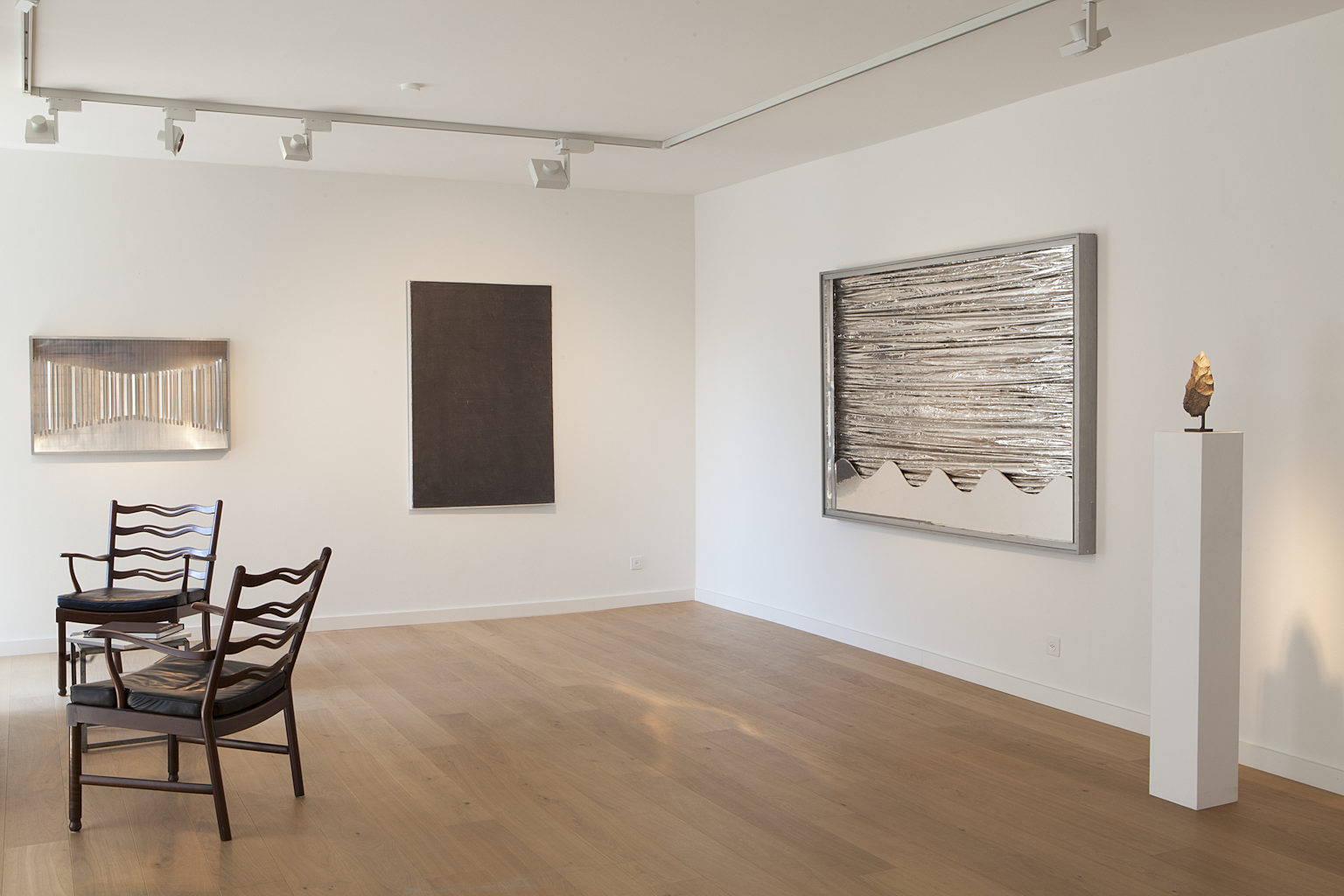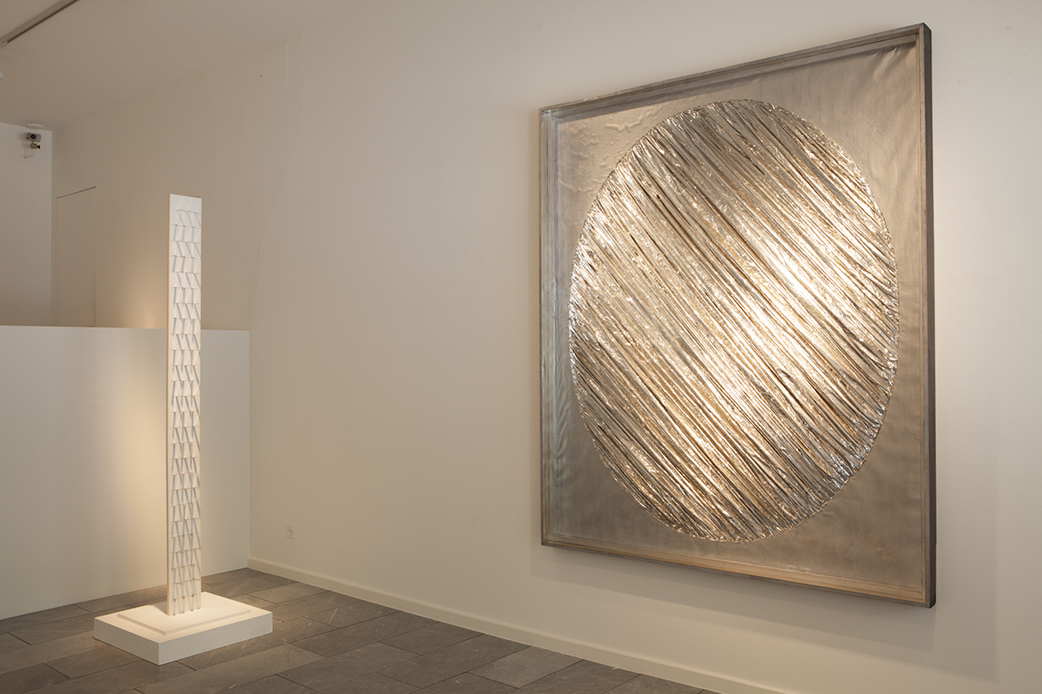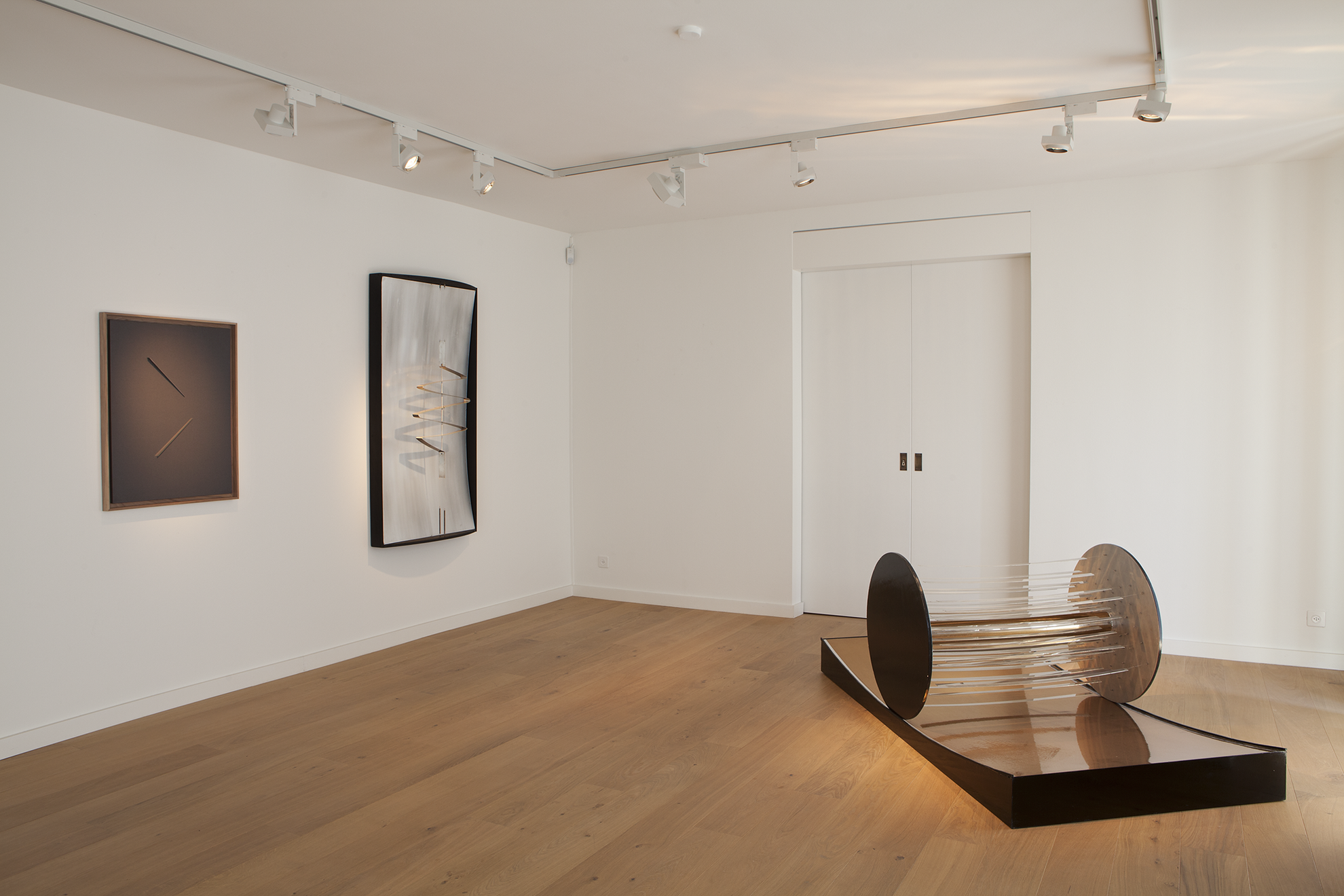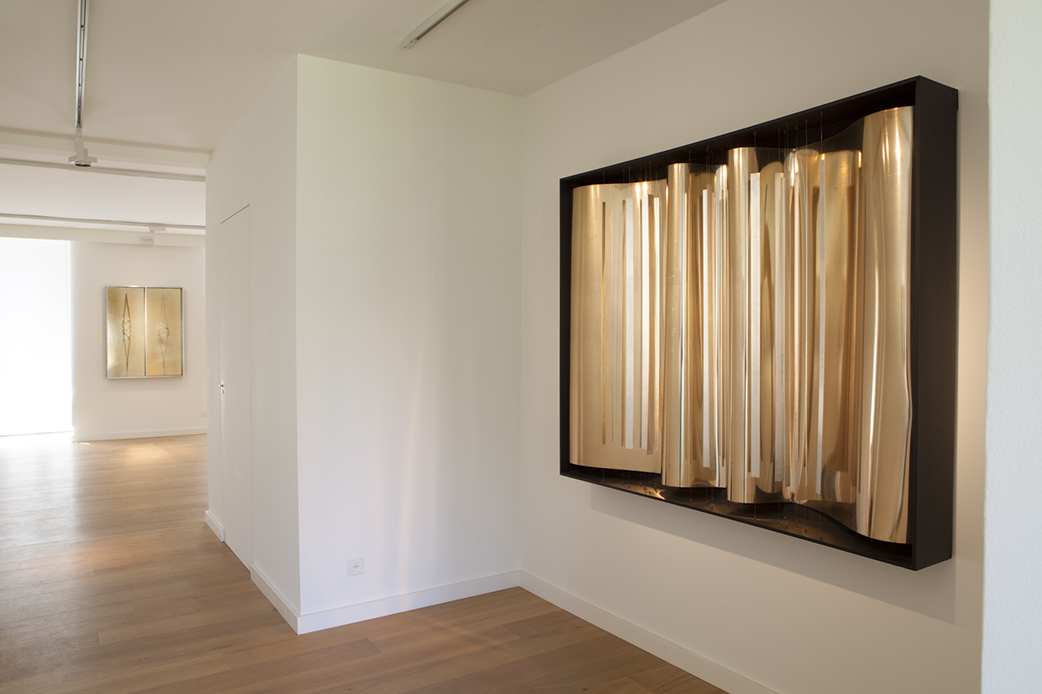
Goepfert and Zero
Light as Vision
Zurich
International artists came to Main in the 1960s to exchange ideas with Goepfert and to work with him. Goepfert's artist friends and collaborators included Lucio Fontana, Piero Manzoni, and Jef Verheyen. From the early 1960s, Goepfert participated in important shows in the ZERO environment, such as the 1962 exhibition "NUL" at Amsterdam's Stedelijk Museum. As his fame grew, he was invited to Documenta in 1964. Both in Kassel and in the following international ZERO exhibitions he presented his "aluminum reflectors". Together with Jef Verheyen and Lucio Fontana, Goepfert exhibited in Berlin and Frankfurt in 1965.
Real movements,
in turn,
can be triggered by a change
in direction of the viewer
or by a movement in space
Part of the presentations was also the previously created collaborative work. In the same year, together with the architect Johannes Peter Hölzinger, he founded the Planning Association for New Forms of the Environment and rented a small secondary studio in Antwerp from 1966 to 1968. In 1967 he was given a solo exhibition at the Palais des Beaux Arts in Brussels. In his most important solo show during his lifetime, Goepfert retrospectively showed static and kinetic works that had been created since the "White Paintings" and whose sole aim was to thematize light. From 1971 he moved permanently to Antwerp. In the 1970s, exhibitions of his integrative work followed, such as "Architektonische Spekulationen," Museum Schloss Morsbroich, Leverkusen, in 1970, or exhibitions in the ZERO context, such as "ZERO, Beispiele aus der Sammlung Lenz," Städelmuseum Frankfurt, in 1974, or "Zero, Bildvorstellungen einer europäischen Avantgarde 1958-1964, Kunsthaus Zürich, in 1979. In 1982 Goepfert died unexpectedly in Antwerp. After his early death his works are presented until today in the ZERO context.
His last institutional solo exhibition, however, took place in 1987 at the Frankfurter Kunstverein with the title "Goepfert und Zero - Zero und Goepfert". Goepfert's work is characterized by an intense exploration of the phenomena of light, movement, and space. His paintings became operators for the design of light. His artistic development was initially borne by reductive steps. At the end of the 1950s, Goepfert literally emptied his paintings and created monochrome
white paintings. At the beginning of the 1960s, he began to experiment with metals, which reflect light more strongly due to their smooth surfaces. Goepfert first used aluminum partially in monochrome picture panels, then he began to experimentally cut, stretch, bend, and twist aluminum. In the early 1960s, with the intention of incorporating space more strongly, he also replaced canvas with metal. The large group of works entitled "Aluminum Reflectors" was created after 1962. Reflective aluminum forms were attached to transparent nylon threads with movable metal springs in front of the metallic back wall. Thus, the reflectors seem to float in front of the pictorial background and, even in a static state, convey optical vibrations from an interplay of material form and immaterial light appearance. Real movements, in turn, can be triggered by a change in direction of the viewer or by a movement in space. The aluminum apparatuses then begin to tremble and the light reflections to flicker. The exhibition presentation "Hermann Goepfert: Light as Vision - Paintings and Works from the 1950s-1970s" at Cologne Fine Art & Antiques was initiated and organized by Galerie Dierk Dierking and is one of the first solo shows on the artist's significance. In total, over twelve key works from the years 1957 to 1973 are shown. To accompany the exhibition, Hatje Cantz Verlag is publishing a booklet on Hermann Goepfert in German and English with contributions by Dr. Beate Kemfert. The first monograph on Hermann Goepfert is scheduled for publication in 2012/13 by Hatje Cantz Verlag, also edited by Dr. Beate Kemfert.
Goepfert and Zero
Light as Vision
Zurich
Real movements,
in turn,
can be triggered by a change
in direction of the viewer
or by a movement in space
International artists came to Main in the 1960s to exchange ideas with Goepfert and to work with him. Goepfert's artist friends and collaborators included Lucio Fontana, Piero Manzoni, and Jef Verheyen. From the early 1960s, Goepfert participated in important shows in the ZERO environment, such as the 1962 exhibition "NUL" at Amsterdam's Stedelijk Museum. As his fame grew, he was invited to Documenta in 1964. Both in Kassel and in the following international ZERO exhibitions he presented his "aluminum reflectors". Together with Jef Verheyen and Lucio Fontana, Goepfert exhibited in Berlin and Frankfurt in 1965.
Part of the presentations was also the previously created collaborative work. In the same year, together with the architect Johannes Peter Hölzinger, he founded the Planning Association for New Forms of the Environment and rented a small secondary studio in Antwerp from 1966 to 1968. In 1967 he was given a solo exhibition at the Palais des Beaux Arts in Brussels. In his most important solo show during his lifetime, Goepfert retrospectively showed static and kinetic works that had been created since the "White Paintings" and whose sole aim was to thematize light. From 1971 he moved permanently to Antwerp. In the 1970s, exhibitions of his integrative work followed, such as "Architektonische Spekulationen," Museum Schloss Morsbroich, Leverkusen, in 1970, or exhibitions in the ZERO context, such as "ZERO, Beispiele aus der Sammlung Lenz," Städelmuseum Frankfurt, in 1974, or "Zero, Bildvorstellungen einer europäischen Avantgarde 1958-1964, Kunsthaus Zürich, in 1979. In 1982 Goepfert died unexpectedly in Antwerp. After his early death his works are presented until today in the ZERO context.
His last institutional solo exhibition, however, took place in 1987 at the Frankfurter Kunstverein with the title "Goepfert und Zero - Zero und Goepfert". Goepfert's work is characterized by an intense exploration of the phenomena of light, movement, and space. His paintings became operators for the design of light. His artistic development was initially borne by reductive steps. At the end of the 1950s, Goepfert literally emptied his paintings and created monochrome
white paintings. At the beginning of the 1960s, he began to experiment with metals, which reflect light more strongly due to their smooth surfaces. Goepfert first used aluminum partially in monochrome picture panels, then he began to experimentally cut, stretch, bend, and twist aluminum. In the early 1960s, with the intention of incorporating space more strongly, he also replaced canvas with metal. The large group of works entitled "Aluminum Reflectors" was created after 1962. Reflective aluminum forms were attached to transparent nylon threads with movable metal springs in front of the metallic back wall. Thus, the reflectors seem to float in front of the pictorial background and, even in a static state, convey optical vibrations from an interplay of material form and immaterial light appearance. Real movements, in turn, can be triggered by a change in direction of the viewer or by a movement in space. The aluminum apparatuses then begin to tremble and the light reflections to flicker. The exhibition presentation "Hermann Goepfert: Light as Vision - Paintings and Works from the 1950s-1970s" at Cologne Fine Art & Antiques was initiated and organized by Galerie Dierk Dierking and is one of the first solo shows on the artist's significance. In total, over twelve key works from the years 1957 to 1973 are shown. To accompany the exhibition, Hatje Cantz Verlag is publishing a booklet on Hermann Goepfert in German and English with contributions by Dr. Beate Kemfert. The first monograph on Hermann Goepfert is scheduled for publication in 2012/13 by Hatje Cantz Verlag, also edited by Dr. Beate Kemfert.
IMPRINT
© DIERKING 2025
